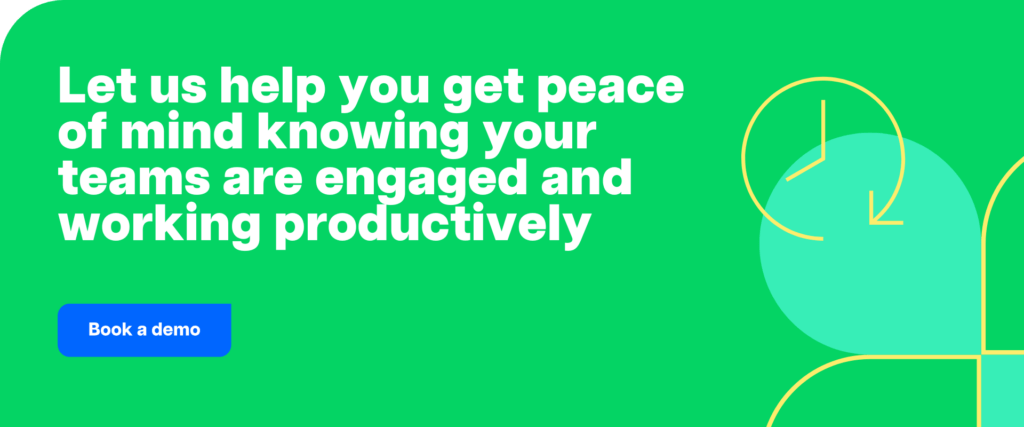The focus is slowly shifting to the employees, who are a company’s most valuable asset in today’s tough business world. Making the work experience better for employees helps businesses succeed and makes workplaces happy. This detailed guide looks at the what, why, and how of the employee journey and gives companies that want to get the most out of HRM useful tips.
Table of Contents
- What is an employee journey?
- Why is supporting the employee journey important?
- What is employee journey mapping?
- How to map an employee journey
- The benefits of employee journey mapping
- How to create a strong employee journey
What is an employee journey?
The employee journey includes every part of working for a company, from the first day of training to the last day of work and everything in between. It has many important stages, such as onboarding, growth, retention, and exiting. Each stage has its own opportunities and challenges. Planning and carrying out these events with care will make employees happier and more involved.
It’s helpful to think of this journey in phases:
- Awareness and recruitment: The potential employee learns about the company and applies for a position.
- Onboarding: The employee learns the ropes of the job and the company culture.
- Development: The employee receives training and opportunities to grow professionally.
- Retention: The company employs strategies to keep the employee satisfied and engaged.
- Exit: The employee leaves the company, ideally in a manner that maintains a positive relationship.

Why is supporting the employee journey important?
Investing in an employee journey that is well-supported is essential. It directly affects employee engagement and job happiness, two factors that are strongly related to higher production and better performance. Good working relationships strengthen the company’s employer brand, which attracts top personnel. To put it another way, employees are more likely to put in the time and effort required to finish their task and contribute to the success of the company when they feel valued and inspired.
What is employee journey mapping?
The strategic process of recording the important events and phases of an employee’s career at a company is called employee journey mapping. With the use of this technique, crucial touchpoints where actions can have the biggest effects are identified. Organizations may ensure a smoother and more engaging work experience by better meeting the requirements and expectations of their employees by recognizing these moments.
How to map an employee journey
An essential first step in comprehending and improving the whole employee experience in a company is mapping out the employee journey. Here’s a thorough examination of each stage of the procedure:
1. Gather data
Objective: Gather in-depth data to comprehend the present state of the employee experience from a variety of angles.
- Surveys: Send out surveys to collect quantitative information on a range of employee lifecycle topics, such as job satisfaction, role and responsibility comprehension, and management feedback.
- Interviews: To gather qualitative insights, do one-on-one interviews. These can go into great detail about topics including daily obstacles, workplace culture, and improvement recommendations.
- Observation: To find differences between stated experiences and actual practices, observe interactions and workflows in the workplace firsthand.
- Exit interviews: Examine exit interviews to find out why workers depart and to spot any patterns or reoccurring problems.
- Tools and techniques: To compile and analyze data, use digital technologies like HR analytics platforms, Zoom for virtual interviews, and SurveyMonkey for surveys.
2. Identify key touchpoints
Objective: Pinpoint critical moments in the employee journey that significantly impact their experience.
- Onboarding experience: The initial phase of training and integration into the company is crucial. Identifying elements that can be improved, such as mentorship programs or orientation sessions, can enhance new hire retention and satisfaction.
- Performance evaluations: These are pivotal in determining career progression and satisfaction. Identifying how these can be made more constructive and aligned with personal career goals is key.
- Employee milestones: Recognize and plan for career milestones, promotions, and role changes that are significant for employee growth.
- Support and recognition: Identify how support is provided in times of need and how achievements are recognized in the organization.
Mapping tools: Use journey mapping software like UXPressia or Microsoft Visio to visualize these touchpoints and their impact on the employee experience.
3. Analyze and plan
Objective: Utilize the insights gained to identify areas for improvement and develop strategic interventions.
- Data analysis: Break down the data collected to uncover trends, pain points, and opportunities.
- Strategic planning: Based on the analysis, develop plans to address the key areas. This might involve redesigning the onboarding process, revamping training programs, or introducing new employee recognition systems.
- Stakeholder involvement: Engage with stakeholders across the organization to ensure the planned changes align with broader business objectives and secure their buy-in.
Strategies: Employ tools like SWOT analysis to assess strengths, weaknesses, opportunities, and threats in the current employee experience.
4. Implement changes
Objective: Execute the planned initiatives aimed at enhancing identified touchpoints.
- Pilot programs: Test new initiatives in controlled environments to gauge effectiveness before a full rollout.
- Training and development: Implement new training programs or enhance existing ones to address gaps in skills or knowledge.
- Policy updates: Make necessary adjustments to HR policies to better support the workforce.
Implementation tools: Project management software like Asana or Trello can help coordinate and track the progress of implementation efforts.
5. Review and iterate
Objective: Continuously assess the impact of changes and refine the journey as needed.
- Feedback loops: Establish mechanisms to regularly gather feedback on recent changes to understand their impact and identify further areas for improvement.
- Performance metrics: Utilize HR metrics to track the outcomes of implemented changes, such as employee turnover rates, employee satisfaction scores, and productivity levels.
- Iterative improvement: Based on feedback and performance data, refine and adjust the initiatives. Consider establishing a continuous improvement team dedicated to the ongoing enhancement of the employee journey.
Review tools: Use data analytics platforms to monitor metrics and feedback tools like Officevibe for real-time employee sentiment analysis.
Mapping the employee journey is a dynamic process that requires continuous attention and adaptation to be effective. By systematically following these steps, organizations can create a more engaging and productive work environment tailored to the needs of their workforce.

The benefits of employee journey mapping
Employee journey mapping is a strategic tool that offers numerous advantages for organizations aiming to enhance their workplace culture and operational efficiency. Below are detailed benefits derived from effectively implementing employee journey mapping.
Enhanced employee insights
Objective: Gain a deeper understanding of employee needs, expectations, and behaviors.
- Better understanding of employee lifecycle: Mapping the journey helps HR and management understand each phase of the employee experience, from onboarding to exit. This holistic view reveals how employees interact with various aspects of the organization and where they might encounter issues.
- Identifying patterns and trends: With comprehensive data, organizations can identify common patterns and trends in employee behavior. For example, if multiple employees find a particular training module unhelpful, revisions can be targeted to enhance effectiveness.
- Tailored solutions: Insights into individual and group experiences allow for more personalized HR strategies, catering to diverse employee needs and improving overall job satisfaction.
Impact: These insights can lead to more effective HR policies and a more supportive workplace environment, reducing misunderstandings and enhancing mutual respect between staff and management.
Improved engagement
Objective: Increase employee engagement and satisfaction by addressing critical moments effectively.
- Addressing pain points: Organizations can greatly improve employee morale and job satisfaction by comprehending and improving key touchpoints in the employee experience. This can entail streamlining administrative procedures, improving channels of communication, or offering improved assistance during periods of high workload.
- Fostering a positive work environment: When employees perceive that their input is actually resulting in tangible changes, they are more likely to feel appreciated and involved. They have better daily experiences as a result, and their dedication to the company is strengthened.
- Increasing job satisfaction: Job satisfaction and engagement are intimately related. Engaged workers are more likely to report being happier in their jobs, which can boost output and reduce attrition.
Impact: Higher engagement levels are often reflected in increased productivity and better quality of work, directly benefiting the company’s bottom line.
Strategic improvements
Objective: Implement targeted interventions for more meaningful changes, impacting retention and productivity positively.
- Data-driven decision making: Employee journey mapping provides data that can be used to make informed decisions about where to allocate resources for the biggest impact on employee satisfaction and organizational efficiency.
- Enhancing retention rates: By improving critical aspects of the employee experience, organizations can reduce turnover. Employees are more likely to stay with a company that actively works to improve their workplace experience and shows a commitment to their professional growth.
- Boosting productivity: Optimized processes and improved engagement lead to higher productivity. Employees who have clear career paths, adequate support, and recognition are more productive and contribute positively to organizational goals.
Impact: Through increased productivity and retention, employee journey mapping-based strategic enhancements not only improve individual employee outcomes but also propel corporate success.
Employee journey planning has numerous, significant advantages. The practice contributes to the development of a more adaptable and long-lasting company by helping to improve engagement, obtain insightful knowledge about employee experiences, and make strategic adjustments. Companies that prioritize the employee experience not only improve their internal culture but also establish themselves as appealing employers in the highly competitive job market.
How to create a strong employee journey
Creating a strong employee journey enhances workplace satisfaction and retention. Here are concise strategies to achieve this:
Flexible onboarding programs
- Customization: Tailor onboarding to fit the roles and experiences of new hires.
- Mentorship: Include mentorship to help newcomers integrate smoothly.
- Pace adjustment: Allow employees to progress at their own comfortable pace.
Continuous learning and development
- Career pathways: Offer clear career advancement opportunities and relevant training.
- Skill upgrades: Provide access to the latest industry-related training and workshops.
- Cross-functional training: Encourage learning across different business areas to broaden understanding.
Regular feedback loops
- Scheduled reviews: Conduct regular performance evaluations for open discussions on progress and goals.
- 360-degree feedback: Incorporate thorough input from all organizational levels.
- Real-time feedback: Encourage a culture in which exchanging constructive criticism is a regular part of dealings.
Recognition and reward systems
- Performance-based rewards: To acknowledge exceptional performance, give bonuses and promotions.
- Non-monetary recognition: Use non-monetary methods of gratitude, such as extra days off or public recognition.
- Personalized rewards: Tailor prizes to each recipient’s tastes to increase their worth.
By putting these techniques into practice, you can create a dynamic and encouraging work environment that matches employee development with organizational success and increases productivity and job satisfaction in general.
Conclusion
Enhancing workflows and HR procedures is only one aspect of optimizing the employee experience; another is building a vibrant ecosystem that supports employees’ development and success. Organizations can greatly increase overall performance and employee happiness by comprehending and proactively enhancing each step of the employee experience. This is where the road to employee greatness starts. Is your company prepared to take it?

Andy is a technology & marketing leader who has delivered award-winning and world-first experiences.


